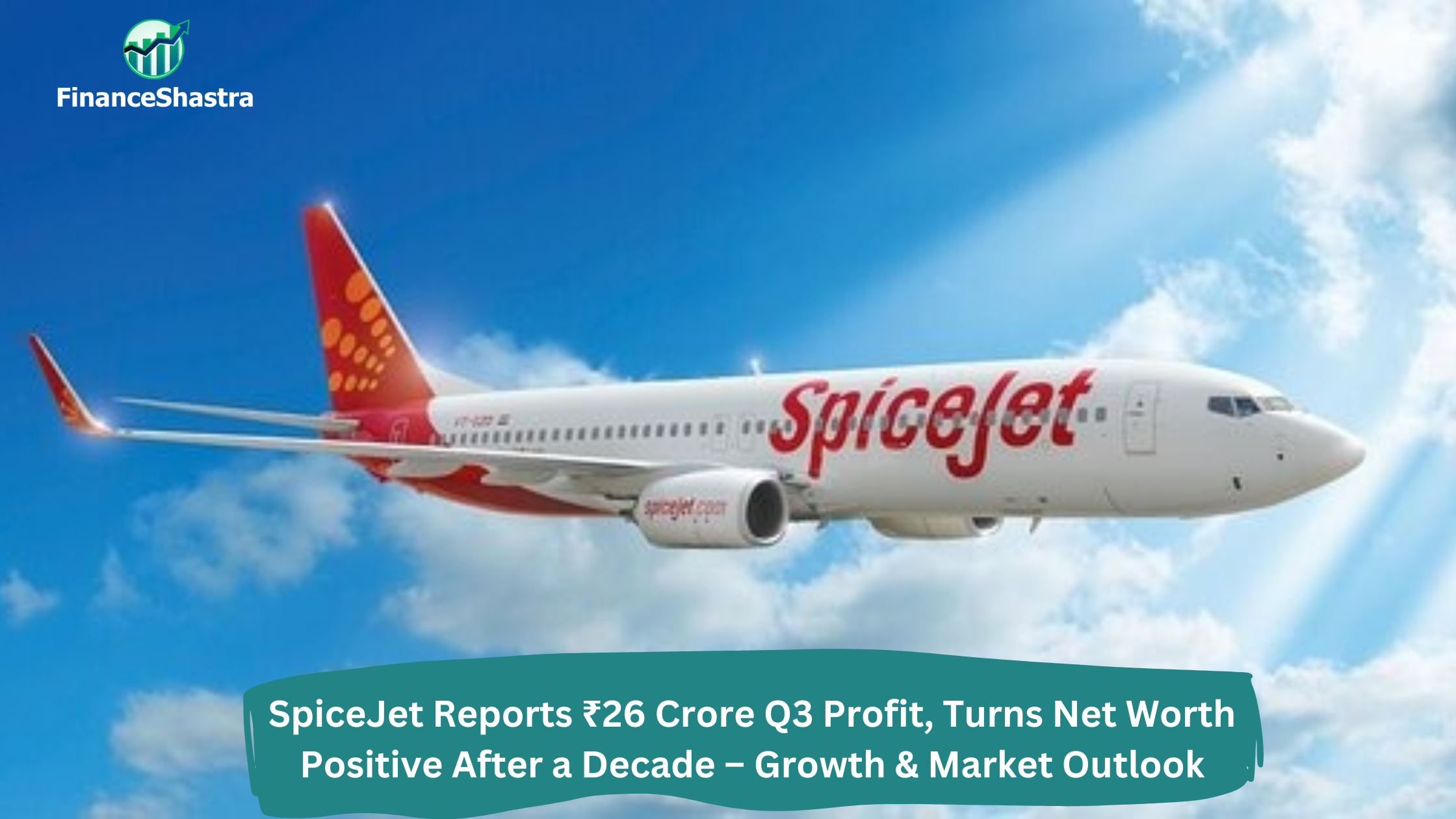SpiceJet Reports ₹26 Crore Q3 Profit, Turns Net Worth Positive After a Decade – Growth & Market Outlook
Business and Industry Overview
SpiceJet is an Indian low-cost airline headquartered in Gurgaon, Haryana. As of June 2024, it is the sixth-largest airline in India by number of domestic passengers carried, with a market share of 4%. It connects 73 destinations, including 60 Indian and 13 international locations, from its bases in Delhi and Hyderabad.
Established as an air taxi provider, ModiLuft in 1994, the company was acquired by Indian entrepreneur Ajay Singh in 2004 and renamed SpiceJet. The airline operated its first flight in May 2005. Indian media baron Kalanidhi Maran acquired a controlling stake in SpiceJet in June 2010 through Sun Group but sold it back to Ajay Singh in January 2015. SpiceJet operates a fleet of Boeing 737 and Bombardier Dash 8 aircraft.
It operates many UDAN flights, supporting regional connectivity. The airline had a higher market position in 2021 with a 10.5% market share but dropped to fifth in 2023 with 5.5%, further declining to sixth in 2024. This was due to financial struggles that led to the grounding of many planes. In 2023, the airline had 54 planes, but 21 were non-operational due to unpaid rent. It had 114 planes in FY21, which dropped to 76 in FY23. Passenger occupancy remained high, with a domestic load factor of 86.6% in Q2 FY24 and the highest domestic PLF of 88.6% in FY23.
SpiceJet’s CMD Ajay Singh and Busy Bee Airways have submitted a bid to acquire GoFirst. Analysts believe that while the airline is working to fix its financial problems, it must improve money management to ensure long-term growth.
Air travel in India is growing because more people want to fly. By 2024, India will be the third biggest aviation market. Fewer people are flying with them now. In August this year, only 2 out of 100 people who took flights in India chose SpiceJet. Last year in January, this number was 7 out of 100.
In August, SpiceJet flew 302,000 people, which is much less than last year. Other Indian airlines together flew 13.1 million people, which is more than last year. IndiGo, the biggest airline in India, flew the most people and had 62 out of every 100 passengers.
Latest Stock News
SpiceJet has reported a profit of ₹26 crore for the December 2024 quarter, a big improvement from the ₹300 crore loss in the same period last year. The airline’s revenue increased by 35% to ₹1,651 crore, helped by strong passenger demand and better efficiency, though it was lower than the ₹2,149 crore reported in December 2023. The company also raised ₹3,000 crore from investors, which helped it turn net worth positive for the first time in a decade, now standing at ₹70 crore. SpiceJet spent ₹170 crore to bring grounded planes back into service and cleared ₹601 crore in statutory dues like GST and TDS. The airline’s Passenger Load Factor (PLF) was strong at 87%, and Revenue Per Seat Kilometer (RASK) stood at ₹4.57. The company expects demand and network improvements to drive double-digit growth in RASKs in the next quarter. SpiceJet’s stock closed at ₹47.97 on February 25, 2025, up 1.70%. However, the stock market was closed on February 26 for Mahashivratri.
Potentials
SpiceJet has a bright future because more people in India are choosing to fly. The country’s air travel market is growing fast, and soon it will be the third largest in the world. SpiceJet is planning to add more planes and fly to new places, both in India and other countries. The company has also become financially stronger after raising a big amount of money, which will help it grow. It expects to make more money in the next few months as more people book tickets. The government is also helping airlines by making it cheaper to fix and maintain planes. SpiceJet is expanding its cargo business and has also been given permission to fly special Haj flights, which will bring in more income. The company is also looking for new partners and opportunities to grow. With better money management, new planes, and more passengers, SpiceJet is working towards a stronger and more successful future.
Analyst Insights
Key Financial Metrics:
Revenue: ₹1,140.7 crore in Q3 FY25 (down 35% YoY)
EBITDA: ₹210 crore in Q3 FY25 (significantly higher than ₹3 crore in Q3 FY24)
Net Profit: ₹25 crore in Q3 FY25 (compared to ₹301 crore loss in Q3 FY24)
Passenger Load Factor (PLF): 87% (indicating strong demand)
Market Cap: ₹3,000-4,000 crore range (fluctuating)
PE Ratio: Not meaningful due to past losses
Investment Outlook & Opinion:
SpiceJet has shown a turnaround with a net profit after several loss-making quarters. The company has improved its financials, reduced debts, and raised ₹3,000 crore through QIP, which strengthens its balance sheet. However, revenue decline remains a concern, and competition from market leader IndiGo is strong. Operational improvements, new fleet expansion, and government support for MRO services provide growth potential.
Recommendation:
Hold—While financials have improved, revenue decline and market competition create risks. Investors should wait for sustained profitability before considering a buy. Short-term traders may find opportunities in price fluctuations.

